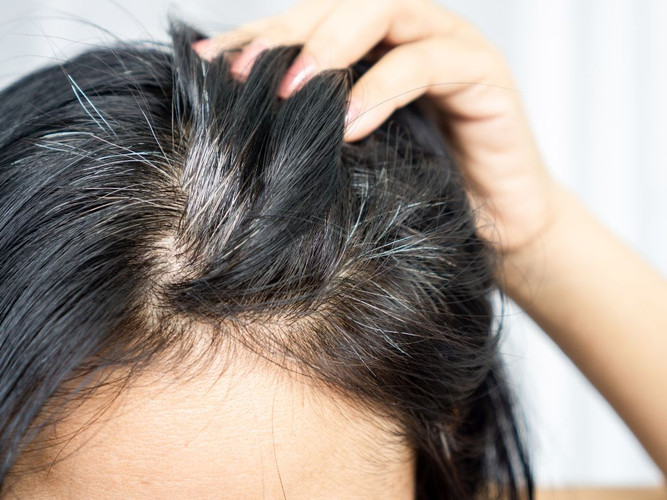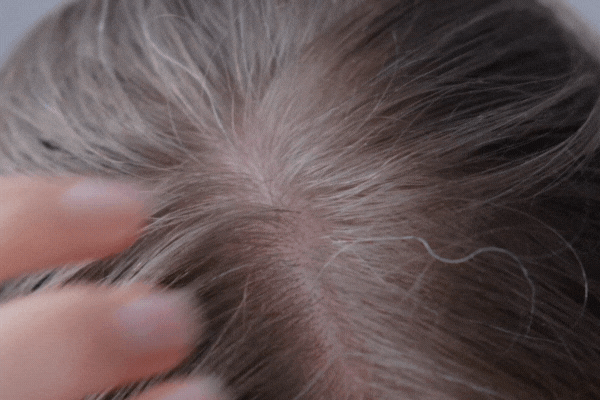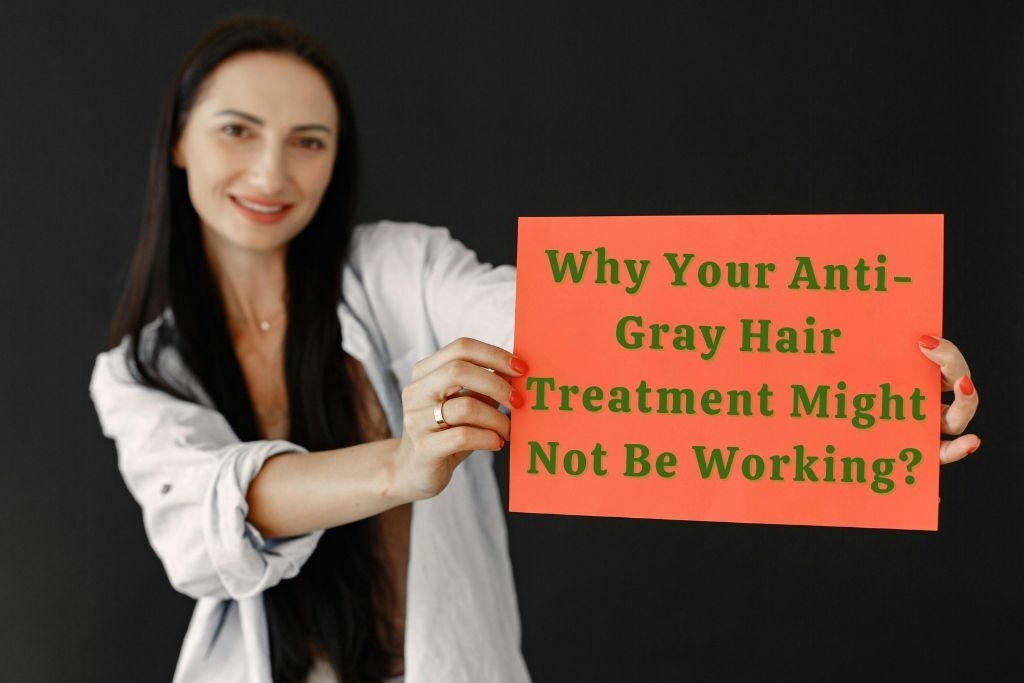Why Anti-Gray Hair Treatments May Not Work for Everyone (and Why They Still Can for Most)
May 30, 2023 | By Sophia L.

Anti-gray hair treatments have surged in popularity, especially those promising to restore natural hair color by boosting melanin production. But while some users experience impressive results, others see little to no change.
So, why the difference?
The truth lies in the biological stage of your gray hair, and your current age might be the key to understanding whether treatment can work for you.
Let's dive into the science.
How Hair Gets Its Color (and Why It Fades)
Each hair strand grows from a follicle embedded in your scalp. Inside that follicle are specialized cells called melanocytes, which produce melanin, the pigment that gives your hair its natural color—black, brown, blonde, or red.

Melanocytes transfer this melanin to keratinocytes, which build the hair shaft. When melanocytes slow down or stop working, hair gradually loses pigment, turning gray or white.
⚙️ The 3 Stages of Graying—and What They Mean for Treatment
Stage 1: Melanin Production Decline (Early-Stage Graying)
-
- What happens: Melanocytes are still alive but are producing less melanin.
- Appearance: Isolated gray hairs or early "salt-and-pepper" look.
- Typical age: Mid-20s to late 30s
- Treatment response: ✅ Highly responsive. Mayraki Anti-gray treatments that stimulate melanin production can reactivate these cells and help return color to the hair.
Stage 2: Melanocyte Dormancy
-
- What happens: Melanocytes are still present but have gone inactive (dormant).
- Appearance: More visible gray patches and slower regrowth of pigmented hair.
- Typical age: Late 30s to late 50s
- Treatment response: ✅ Effectively responsive with consistent care. Depending on scalp health, blood flow, and consistency of product use, melanocytes can be reawakened and begin producing pigment again.
Stage 3: Melanocyte Depletion (Late-Stage Graying)
-
- What happens: The melanocytes are entirely depleted from the follicle.
- Appearance: Hair is entirely white or gray in affected follicles.
- Typical age: 65+
- Treatment response: ❌ Ineffective. No melanin-producing cells remain to be activated, so the hair cannot be pigmented.
Why Your Anti-Gray Hair Treatment Might Not Be Working
You might not see results even if you're using a reputable, natural formula, like those containing Polygonum multiflorum, peptides, or botanical extracts.

Here's why:
-
- You're in Stage 3 graying (melanocyte depletion), often irreversible.
- Your scalp health is compromised – poor circulation, inflammation, buildup, or stress can reduce the effectiveness of treatments.
- You've only used it short-term. Melanin restoration is a slow biological process. Many users stop before the 8–16 week window during which results become visible.
- Underlying health conditions, such as vitamin B12 deficiency, thyroid disorders, or autoimmune diseases, may accelerate graying beyond cosmetic recovery.
But Here's the Good News
If you're under 60 and have only started noticing gray hairs, you are very likely in Stage 1 or Stage 2—when anti-gray treatments work best.
Here's What You Can Do:
-
- Start early – The sooner you begin treatment, the more melanocytes you can support.
- Be consistent – Use the treatment as directed for at least 8–12 weeks.
- Support your scalp—Massage/Comb your hair regularly(ideally 100 times a day) and avoid harsh shampoos that strip nutrients.
- Eat smart – Include copper, B12, iron, and antioxidants in your diet.
- Avoid chronic stress – Oxidative stress is a key cause of early graying and melanocyte damage.
Scientific Research Behind These Findings
-
- Melanocyte Activity & Aging: Tobin, D. J. (2009). Human hair pigmentation—biological aspects. International Journal of Cosmetic Science, 31(5), 361-368.
- Melanin Decline with Age: Slominski, A., & Paus, R. (1993). Melanogenesis is coupled to the hair growth cycle—Journal of Investigative Dermatology, 101(1), 90S–97S.
- Melanocyte Stem Cell Depletion: Nishimura, E. K. et al. (2005). A key role for the niche in maintaining immature melanocyte stem cells. Nature, 437(7059), 275–280.
- Effectiveness of Polygonum Multiflorum: Lin, Y. K., et al. (2011). Hair growth-promoting activity of Polygonum multiflorum extract in mice. Journal of Ethnopharmacology, 134(3), 873–879.
Timing Is Everything
Mayraki Anti-gray hair treatments work by supporting and reactivating your melanin-producing cells. But they only work if those cells are still present. That's why starting treatment early—ideally before your mid-50s—is critical.

If you're just starting to notice grays or are in your 30s or 40s, there's a good chance your melanocytes are simply dormant—not gone. With the right approach, you can still safely and effectively restore your hair's natural color.




